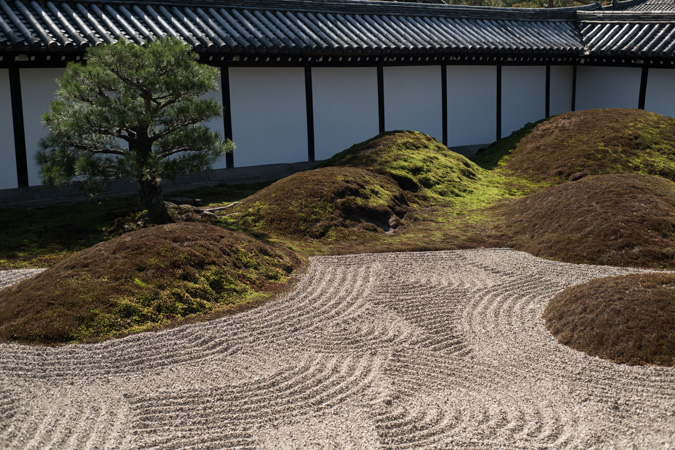
Tofuku-ji, Kyoto
Tofuku-ji The Hojo is one of main buildings at Tofukuji Temple. Founded in 1235 and reconstructed in 1890. The gardens are arranged at the four quarters around the building and were laid out in 1939 by Mirei Shigemori who intended to express the simplicity of Zen in the Kamakura period.
The southern garden (above), in the front of the Hojo is composed of four rock-composites symbolising Elysian islands – from the east to the west named Eiju, Horai, Koryo, and Hojo – placed on the sand garden floor Hakkai (meaning the eight rough seas) and five moss-covered sacred mountains at the right corner (the west side).
The western garden (below right). Compared with the rigidity of the southern garden’s Zen-style (dry stone-garden), this garden has a gentle style composed of moss and azalea-shrubs trimmed in a chequered pattern.
The northern garden (above middle + top image). Square-cut stones and moss are distributed in a small-sized chequered pattern (above + top image).
The eastern garden (above left). Here, seven cylindrical stones are arranged in the moss field to represent main stars of the Great Bear of the heaven. These stones were originally foundation stones used at another place in the temple.
Some other details below:















